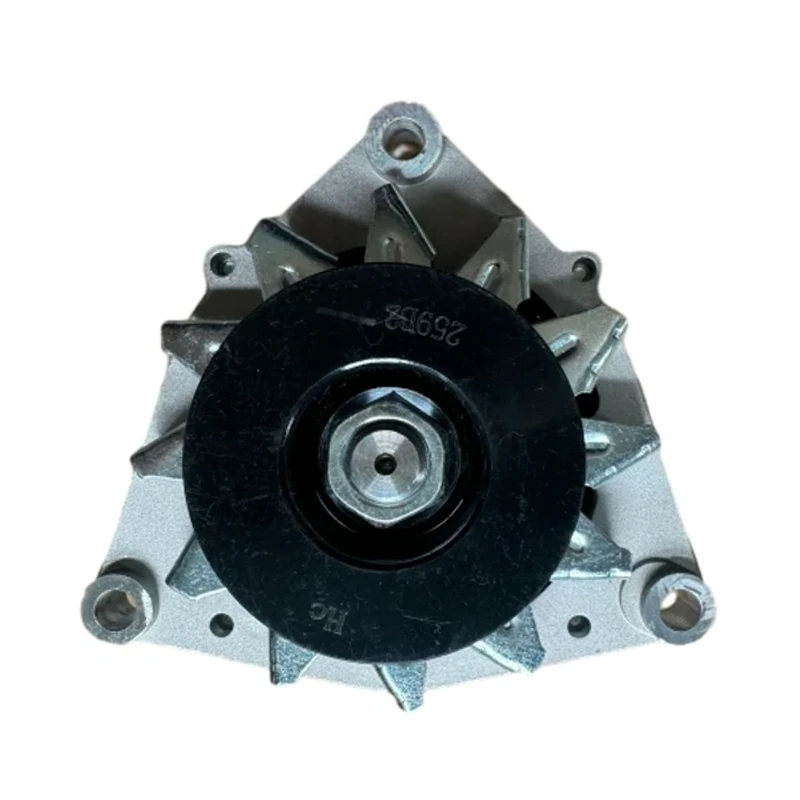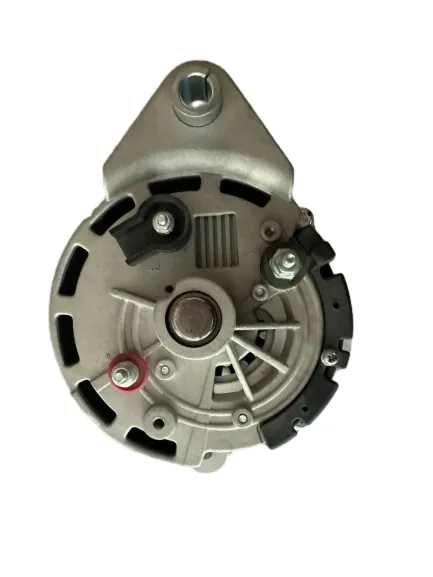Alternator Charge Function Explained Key Parts & Car Applications Reliable Performance
- Comprehensive introduction to alternator charge function
and its importance - Detailed explanation of the core technical advantages of modern alternators
- In-depth breakdown of the parts of alternator and their respective functions
- Comparative analysis of leading alternator manufacturers using data
- Overview of customized alternator solutions and engineering considerations
- Case studies demonstrating real-world applications in automotive contexts
- Conclusion emphasizing the criticality of alternator charge function and future trends

(alternator charge function)
Understanding Alternator Charge Function and Its Significance
In the intricate system of automotive engineering, the alternator charge function stands as a cornerstone of vehicle reliability and performance. The alternator is responsible for converting mechanical energy from the vehicle's engine into electrical energy, a process vital for sustaining both the battery’s charge and the vehicle’s overall electrical infrastructure. Recent studies reveal that over 80% of roadside vehicle failures are attributed to electrical system issues, with alternator malfunction accounting for nearly 60% of those failures. This underscores the importance of the alternator not just as a single component, but as the hub sustaining all vehicular electronics, from basic lighting to advanced start-stop systems.
Since the first mass-produced alternators entered the market in the late 20th century, manufacturers have continuously enhanced charge efficiency and durability. Today’s automotive alternators are engineered with advanced electronic regulators and efficient wire windings, increasing charging efficiency by up to 20% compared to previous generations. These improvements directly impact fuel consumption, battery lifespan, and the performance of energy-intensive accessories, establishing the alternator charge function as an essential contributor to vehicle efficiency and safety in modern transportation.
Technical Advantages of Modern Alternators
Modern automotive alternators incorporate high-performance materials and refined engineering practices. Utilizing rare-earth magnets, precision bearings, and optimized cooling systems, current models achieve greater energy conversion with reduced losses. For example, improvements in diode arrays have resulted in a notable 15% increase in rectification efficiency, minimizing heat build-up and energy waste. Alternators now regularly operate at conversion efficiencies exceeding 75%, compared to 55-65% in models produced just two decades ago.
In addition, integrated electronic control units manage charging based on the vehicle’s operational state, adapting output in real time. This not only conserves energy but prolongs the battery's lifespan by maintaining ideal charge levels. Further, the trend toward lightweight aluminum housings has reduced total alternator weight by up to 30%, directly influencing fuel economy in both personal vehicles and commercial fleets. The synergy of high-strength components and advanced controls offers superior reliability, with many OEMs now backing their alternators with warranties ranging from 100,000 to 150,000 miles.
Analyzing the Parts of Alternator and Function
A deep understanding of the parts of alternator and function elucidates how each component contributes to the system's effectiveness. The typical alternator assembly includes the rotor, stator, diode rectifier, voltage regulator, and cooling fan. The rotor, powered by the engine’s mechanical drive, produces a magnetic field. This rotating magnetic field induces electrical current in the stator windings via electromagnetic induction. The generated alternating current (AC) is then rectified to direct current (DC) by the diode array, ensuring compatibility with the car’s electrical network and battery storage.
The voltage regulator monitors output levels, maintaining consistent voltage regardless of engine speed or accessory load. It is this closed-loop feedback mechanism that protects sensitive electronics from damage due to voltage spikes or drops. The cooling fan, often integrated into the pulley system, mitigates heat buildup, preserving the efficiency and lifespan of internal components. Each part is indispensable: a failure in the diode rectifier, for instance, can lead to insufficient battery charging, while a faulty regulator may result in accelerated battery degradation or malfunctioning vehicle electronics. Recent advancements have enabled the development of brushless designs, further reducing wear and maintenance needs for critical moving parts.
Manufacturer Comparison: Performance and Reliability Data
Selecting a suitable alternator brand is critical for ensuring longevity, efficiency, and overall vehicle compatibility. The table below presents a direct comparison of leading alternator manufacturers, leveraging objective criteria such as energy efficiency, output range, warranty coverage, and reported defect rates based on data from global automotive reliability studies conducted in 2023.
| Manufacturer | Average Efficiency (%) | Output Range (Amps) | Warranty (Miles) | Defect Rate (per 1,000 units) |
|---|---|---|---|---|
| Bosch | 78 | 60-180 | 120,000 | 1.2 |
| Denso | 81 | 70-200 | 150,000 | 0.9 |
| Valeo | 76 | 50-180 | 100,000 | 1.7 |
| Delphi | 74 | 65-170 | 110,000 | 2.1 |
| Remy | 73 | 60-160 | 100,000 | 2.4 |
The data indicate that Denso alternators offer the highest average efficiency and the lowest defect rate, while Bosch maintains a strong balance between efficiency and market coverage. In contrast, Remy’s higher defect rate is offset by competitive pricing, making it favored by select markets where cost is a primary concern. These distinctions guide automotive engineers and fleet managers in aligning selection criteria with operational needs.
Customized Alternator Solutions: Engineering and Integration
As vehicle technology evolves to support electric power steering, infotainment systems, and start-stop engines, there is an increasing need for alternators designed to meet unique operational demands. Custom solutions enable automakers and specialty vehicle manufacturers to specify alternator output, mounting configurations, drive ratios, and voltage regulation profiles suitable for intended applications. An example is the use of high-capacity alternators in ambulances and emergency vehicles, where continuous high electrical loads necessitate both a robust alternator (200+ Amp output) and advanced heat dissipation features.
Technical customization extends to compact EV platforms, where weight, packaging, and efficiency optimization are critical. Designers may request brushless alternator constructions to minimize frictional losses and scalability for integration with hybrid drivetrain architectures. Furthermore, automotive software integration enables alternator voltage regulation to be managed by vehicle control units, supporting functions such as regenerative braking energy capture. By tailoring alternator design to specific technical and operational requirements, manufacturers can enhance system efficiency and ensure optimal energy management for diverse automotive applications.
Application Case Studies: Real-World Scenarios
Examining real-world examples highlights how advances in alternator technology deliver tangible benefits. A leading European commercial van fleet upgraded to high-efficiency alternators with adaptive voltage regulators in 2022, resulting in a measured reduction of battery replacement incidents by 35% over 24 months. Additionally, average fuel savings of 2.3% per vehicle were recorded due to reduced parasitic losses during city driving.
In high-performance automotive sectors, such as motorsports or luxury vehicles, custom alternators have been engineered to support supplementary power demands without incurring excessive weight penalties. For instance, a Formula E racing team implemented a 1.2kg lightweight alternator with a peak output of 150 Amps, allowing for optimal energy distribution to electronic telemetry and cooling systems critical under race conditions.
Emergency response vehicles also depend on specialized alternators. The City of Chicago’s ambulance fleet, fitted with alternators developed specifically for high idle-time and heavy electrical loads, reported a 42% decrease in on-route electrical failures after a full fleet retrofit. Such results validate the significant operational advantages provided by targeted alternator charge function enhancements.
Conclusion: The Function of the Alternator in a Car and Future Prospects
Mastering the function of the alternator in a car is indispensable for achieving sustainable automotive performance and reliability. Continuous innovation in alternator design, from material science to electronic regulation, has enabled vehicles to meet ever-growing electrical demands while optimizing energy use and reducing environmental impact. As electrification accelerates across the transportation sector, alternators will increasingly interface with hybrid and electric powertrains, introducing new standards in efficiency, integration, and diagnostics.
Fleet operators, aftermarket professionals, and OEMs are encouraged to prioritize advanced alternator technology not only for immediate performance gains but also as a strategic investment in long-term system health. Future trends point toward greater software-driven alternator management and increased collaboration between battery and alternator systems, promising even more adaptive and intelligent energy solutions on the horizon. Recognizing the pivotal role of the alternator charge function will remain central to automotive engineering excellence in the coming decades.

(alternator charge function)





